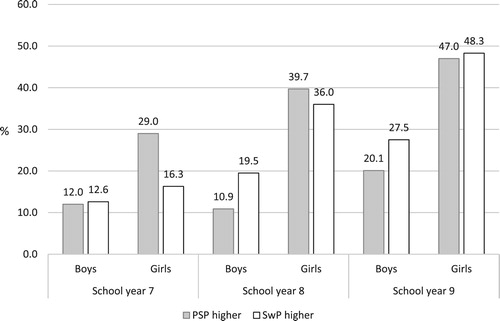Figures & data
Table 1. Participants and non-participants.
Figure 2. Proportions of adolescents categorised as having a higher degree of psychosomatic problems (PSP), and a higher degree of schoolwork pressure (SwP), broken down by sex and school year. Higher degree: 75th–100th percentile. Swedish school year 7 starts at 13 years, year 8 at 14 years and year 9 at 15 years.


